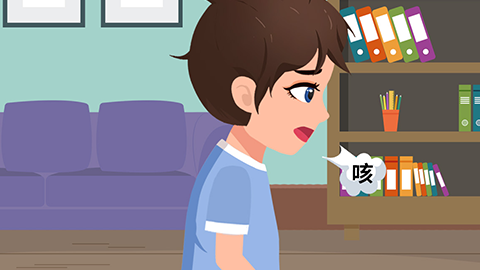How to treat a child's cold, cough, and vomiting
Generally, a child's cold accompanied by coughing and vomiting may be caused by throat irritation, gastrointestinal dysfunction, acute bronchitis, pneumonia, or pertussis. It is recommended to seek timely medical attention and follow the doctor's guidance for general treatment, medication, and other treatment methods. The detailed analysis is as follows:

1. Throat Irritation
When a child catches a cold, the throat area may be affected by inflammation, causing a cough reflex. Frequent coughing can further irritate the sensitive nerves in the throat, triggering a vomiting reflex and resulting in vomiting. Encourage the child to drink more warm water to keep the throat moist and reduce inflammation-related irritation.
2. Gastrointestinal Dysfunction
During a cold, the body's stress response temporarily weakens gastrointestinal function and decreases digestion capacity. Additionally, abdominal pressure increases during coughing, which can lead to stomach discomfort and vomiting. It is recommended to maintain a regular diet with small, frequent meals, avoid oily, raw, cold, or irritating foods, and choose bland, easily digestible foods like congee and noodles to reduce the burden on the gastrointestinal system.
3. Acute Bronchitis
Acute bronchitis is usually caused by viral or bacterial infections. Pathogens invade the bronchial mucosa, triggering an inflammatory response that may lead to congestion, edema of the bronchial mucosa, and excessive secretions, which irritate the respiratory tract and cause coughing. Severe coughing can rapidly increase abdominal pressure, leading to vomiting. Symptoms may also include fever and wheezing. Treatment may involve medications such as dextromethorphan hydrobromide syrup, amoxicillin-clavulanate potassium dry suspension, and cefaclor dry suspension, under the guidance of a physician.
4. Pneumonia
Pneumonia is mainly caused by infection of the lungs by bacteria, viruses, mycoplasma, and other pathogens. After lung inflammation occurs, the gas exchange function is impaired, leading to oxygen deficiency in the body, which stimulates the respiratory center and intensifies the cough reflex. Frequent coughing combined with diaphragm irritation caused by lung consolidation increases abdominal pressure, resulting in vomiting. Symptoms may also include rapid breathing and chest pain. Patients can use medications such as azithromycin dry suspension, ambroxol oral solution, and ceftriaxone sodium for injection under a doctor's advice.
5. Pertussis (Whooping Cough)
Pertussis is caused by infection with Bordetella pertussis. The toxins produced by this bacterium damage the epithelial cells of the respiratory tract mucosa, leading to respiratory inflammation and spasmodic coughing. Coughing attacks are continuous and paroxysmal, persisting until phlegm is expelled or gastric contents are vomited, often accompanied by vomiting. Affected children may also experience mild fever, runny nose, and other symptoms. Patients can follow medical advice to use medications such as erythromycin enteric-coated tablets, levalbuterol hydrochloride nebulization solution, and compound platycodon ammonium chloride oral solution for treatment.
In daily life, it is important to strengthen children's physical exercise, enhance their constitution, and improve immunity. During disease outbreak seasons, try to avoid taking children to crowded, poorly ventilated places. If necessary, wear a mask for protection and wash hands and face promptly after returning home to reduce virus and bacteria contact and transmission.




